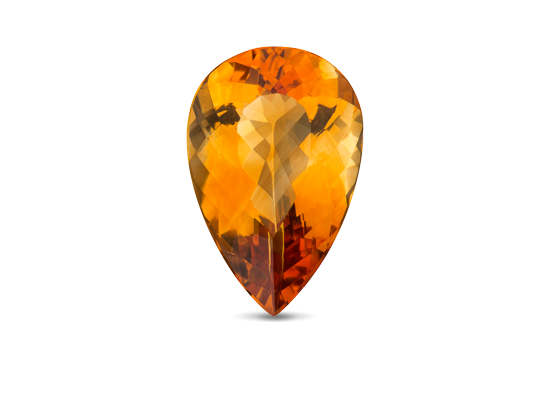
Unveiling The Mysteries Of Citrine Stone And Man-Made Opal
Gemstones have always captivated our imagination with their dazzling beauty and unique properties. Among the myriad of gemstones, two stand out for their distinct characteristics: Citrine stone and man-made opal. In this article, we’ll delve into the fascinating world of Citrine and explore the allure of man-made opal, shedding light on their origins, meanings, and uses.
The Radiance Of Citrine Stone
Citrine stone, often referred to as the “sunshine gem,” possesses a radiant yellow hue that is as warm and inviting as a sunbeam. But what is the story behind this beautiful gem? Citrine is a variety of quartz, one of the most abundant minerals on Earth. Its vibrant coloration is primarily attributed to the presence of iron impurities within the crystal structure. The word “citrine” itself is derived from the French word “citron,” meaning lemon, which accurately captures the gem’s coloration.
Citrine’s Origins
Citrine has a rich geological history. Natural citrine is typically found in igneous rocks, often alongside amethyst, another variety of quartz. These gemstones are formed deep within the Earth’s crust, where intense heat and pressure create the perfect conditions for the crystalline growth of citrine. Over millennia, these gemstones gradually ascend to the Earth’s surface, awaiting discovery.
Man-Made Opal: A Modern Marvel
Man-made opal, on the other hand, is a testament to human ingenuity and creativity. Opal, a gemstone renowned for its play of color, is traditionally found in nature. However, the emergence of man made opal has revolutionized the gemstone industry. But what exactly is man-made opal, and how does it compare to its natural counterpart?
Man-Made Opal’s Genesis
Man-made opal, also known as synthetic opal, is produced in a laboratory setting using advanced technology. Unlike natural opal, which is formed over millions of years through a complex process involving water percolating through rocks, man-made opal is crafted in a matter of months. This innovative technique allows gemologists to replicate the play of colors seen in natural opal, while also introducing new color variations that are not found in the wild.
The Advantages Of Man-Made Opal
Man-made opal offers several advantages over natural opal. One of the most significant benefits is its affordability. Natural opals are often quite expensive due to their rarity and the unpredictability of finding high-quality specimens. In contrast, man-made opal is more accessible to a wider range of consumers.
Another notable advantage of man-made opal is its durability. Natural opal is known for its fragility and sensitivity to changes in temperature and humidity. Man-made opal, being a lab-grown material, is more stable and less prone to cracking or losing its vibrant colors.
Citrine Stone: Meaning And Significance
Now that we have explored the origins and beauty of citrine, let’s delve into its meaning and significance. Citrine is often associated with positive energy and abundance. This gemstone is believed to carry the energy of the sun, bringing warmth and joy to its wearer. Its bright, cheerful color is said to ward off negativity and enhance one’s sense of well-being.
In the realm of crystal healing, citrine is often used to stimulate creativity and enhance mental clarity. It is also thought to attract success and prosperity, making it a popular choice for individuals looking to achieve their goals. Many people wear citrine jewelry or keep citrine crystals in their living spaces to harness its beneficial energies.
Man-Made Opal: A World Of Possibilities
Man-made opal, while a relatively recent addition to the world of gemstones, offers a world of possibilities in jewelry design and creative expression. The ability to control the colors and patterns within synthetic opal has opened up new horizons for jewelry designers and artists. With man-made opal, you can select specific colors and create custom patterns that suit your personal style.
The play of color in man-made opal is a captivating feature. This colorful phenomenon is created by the alignment of silica spheres within the opal’s microstructure. Designers often use man-made opal to craft exquisite pieces of jewelry that exhibit these vibrant color displays. Pendants, earrings, and rings featuring man-made opal are coveted for their unique beauty.
Citrine Stone And Man-Made Opal: A Radiant Pair
Both citrine stone and man-made opal have their own distinctive charm, but they can also be combined to create stunning jewelry pieces. The sunny, golden glow of citrine complements the iridescent play of color found in man-made opal. This harmonious blend of warmth and vibrancy results in jewelry that is not only aesthetically pleasing but also spiritually uplifting.
Citrine and man-made opal jewelry pieces can be found in a variety of styles, from classic designs to contemporary, artistic creations. These gemstones work together to form a captivating synergy, bringing out the best of each other.
Caring For Your Citrine And Man-Made Opal Jewelry
Proper care is essential to ensure the longevity of your citrine and man-made opal jewelry. Here are some guidelines to help you maintain their beauty and luster:
- Cleaning: To clean your citrine and man-made opal jewelry, use a soft, lint-free cloth to wipe away any dirt or oils. Avoid harsh chemicals or abrasive materials that could damage the stones.
- Storage: Store your jewelry in a cool, dry place, away from direct sunlight. Use jewelry boxes or pouches to prevent scratches and damage.
- Avoid Impact: Both citrine and man-made opal are relatively soft gemstones, so they are susceptible to chipping or cracking upon impact. Be cautious and avoid subjecting your jewelry to rough handling.
- Protect from Chemicals: Avoid exposing your jewelry to chemicals, such as cleaning solutions, perfumes, or hairsprays, as these substances can potentially harm the gemstones.
Conclusion
Citrine stone and man-made opal, though distinct in their origins, have carved their own unique places in the world of gemstones. Citrine’s radiant yellow glow is a symbol of positivity and abundance, while man-made opal’s captivating play of color represents human innovation and creativity.
Whether you choose to wear these gemstones separately or in combination, their beauty and significance are sure to leave a lasting impression. So, whether you’re seeking to enhance your well-being with the sunny energies of citrine or embrace the vibrant world of man-made opal, the world of gemstones has something special to offer for everyone.



